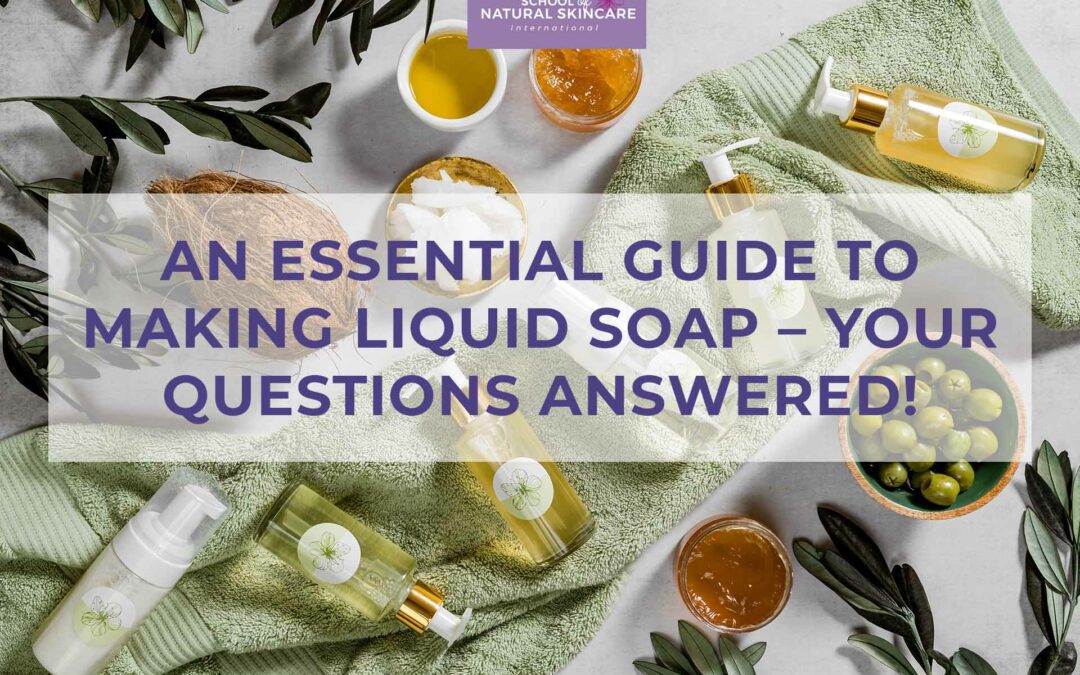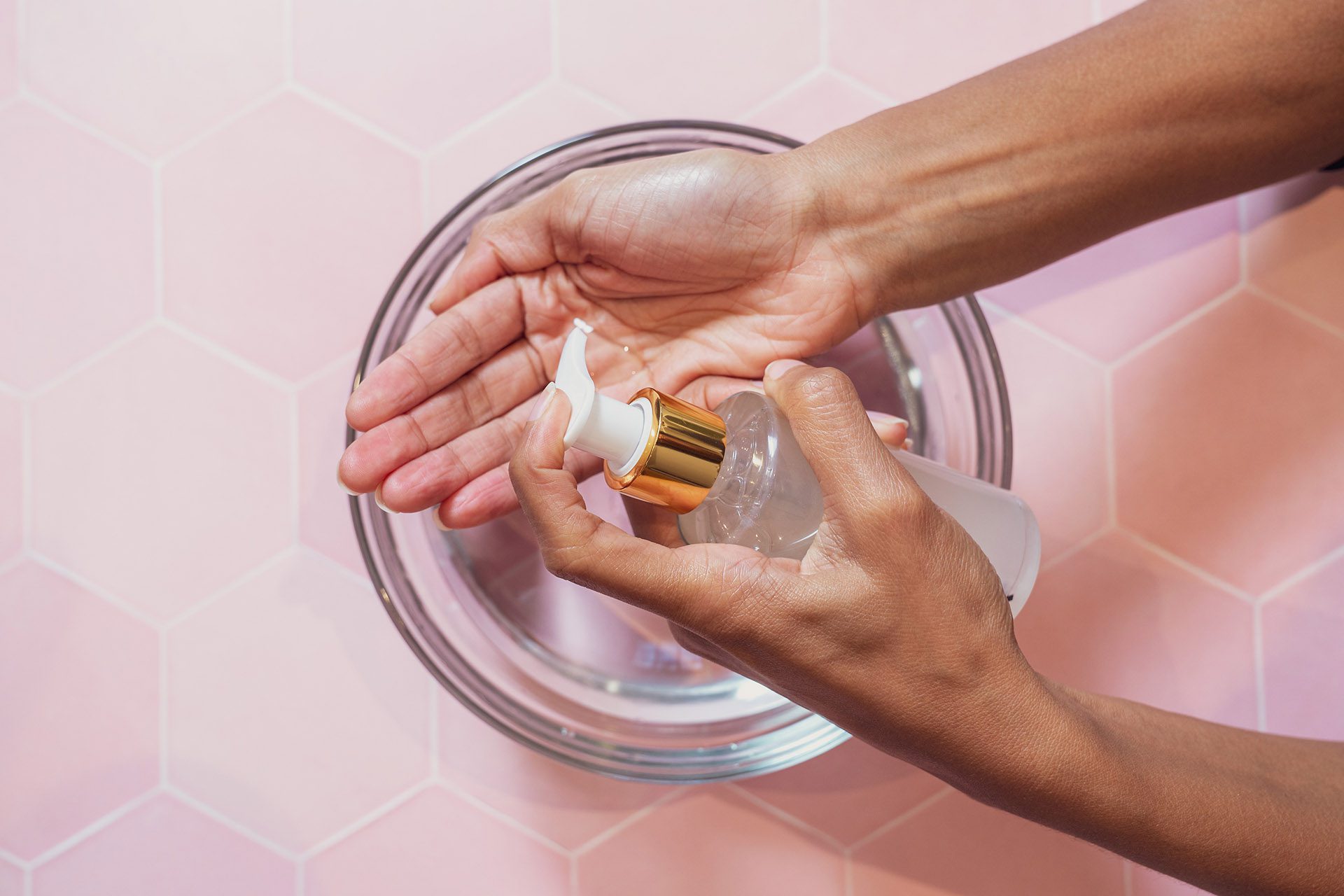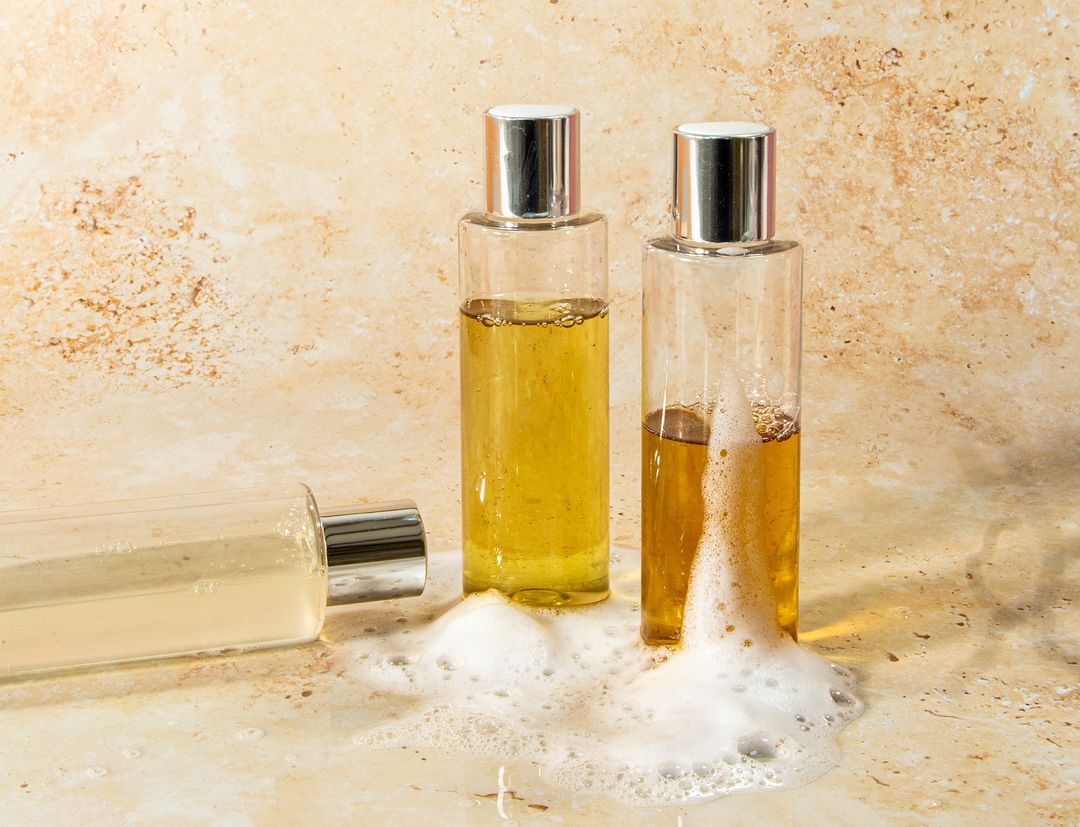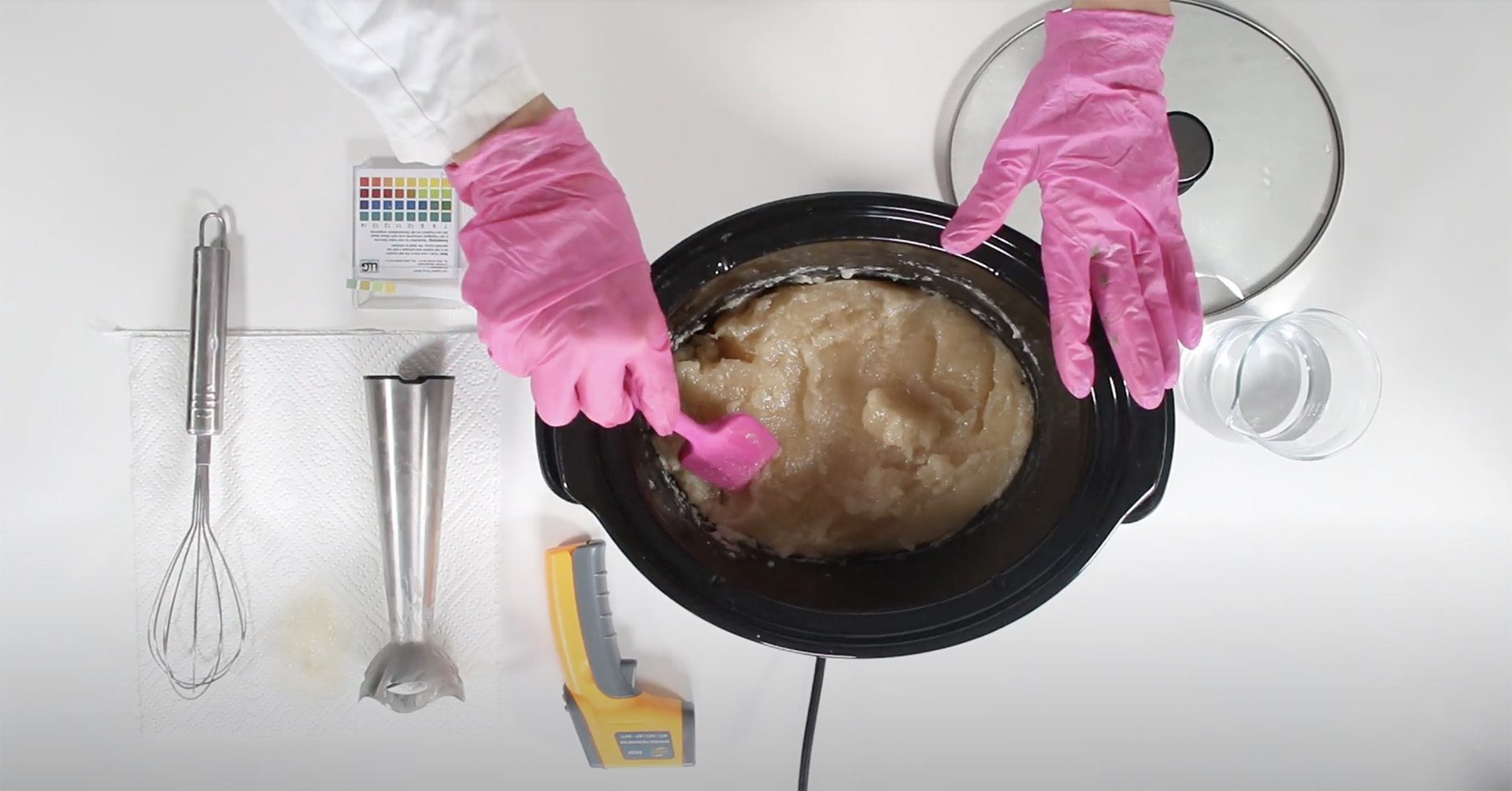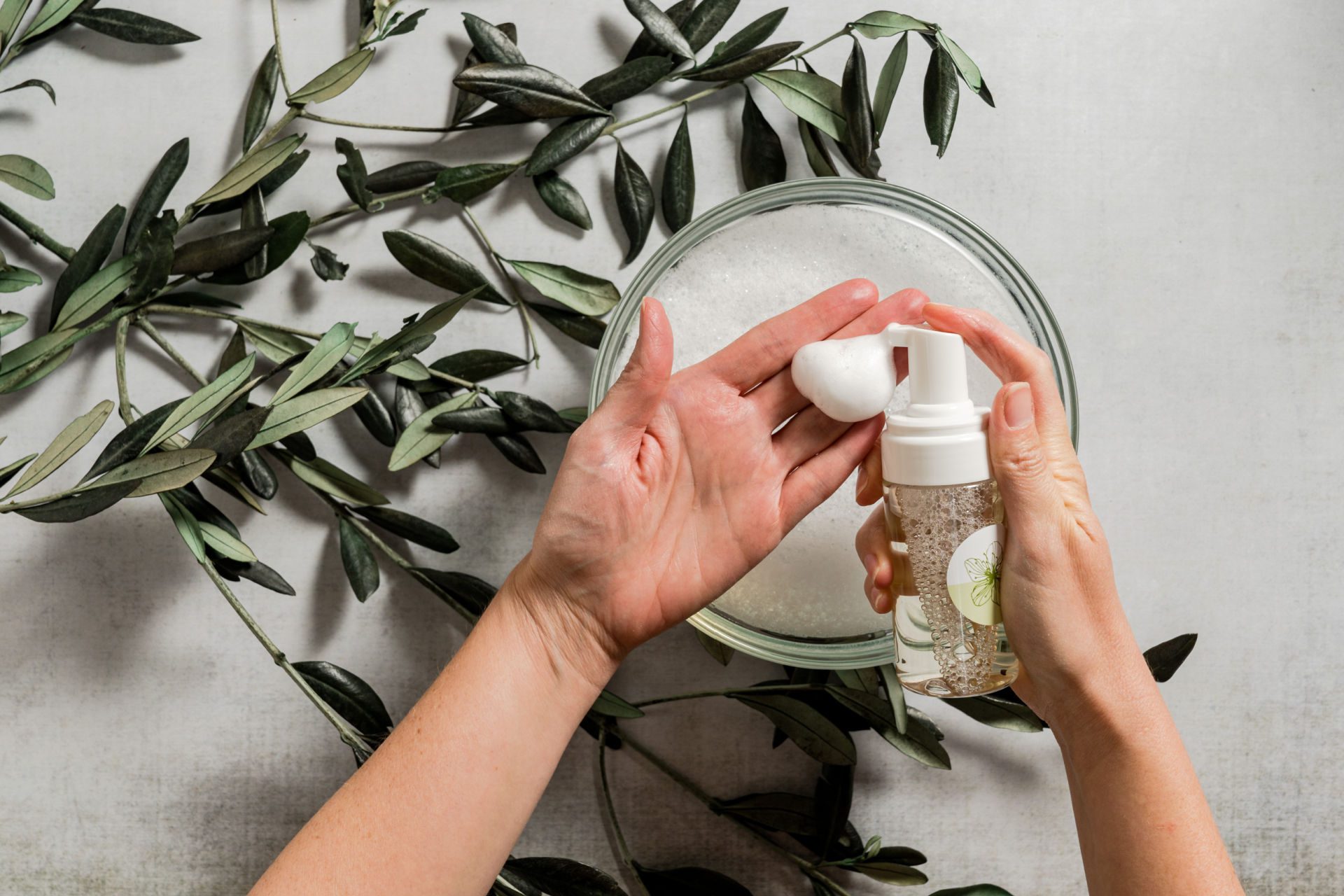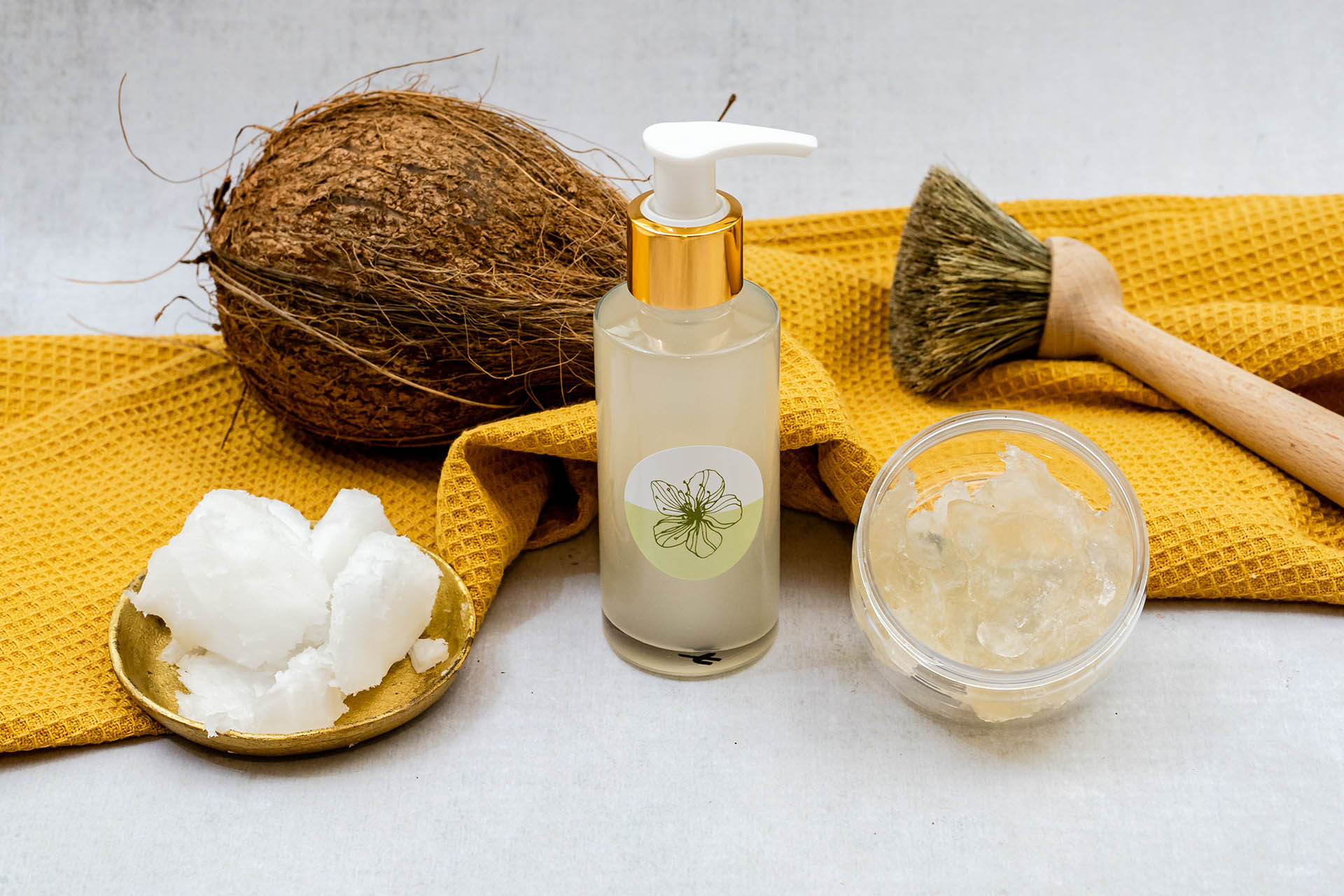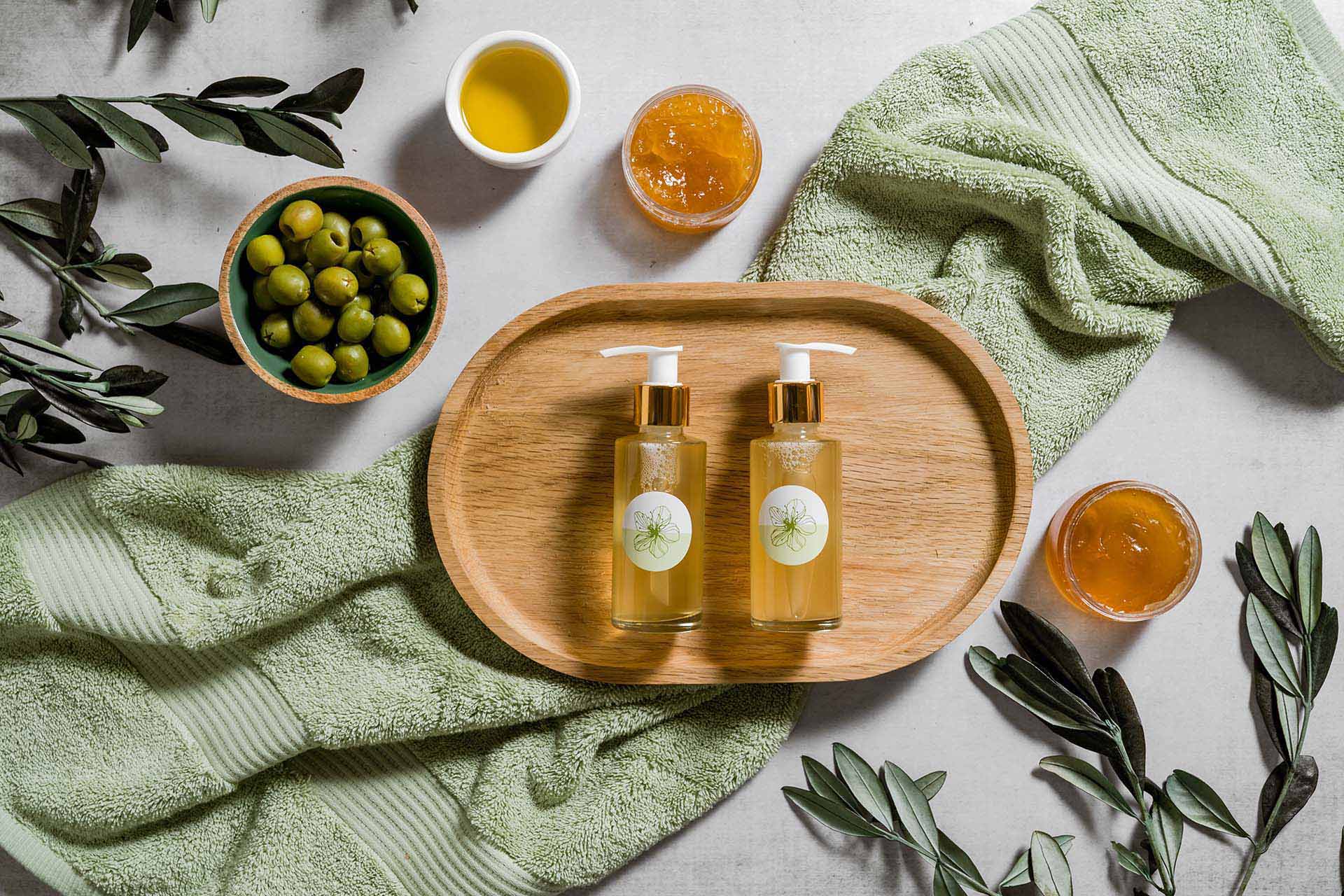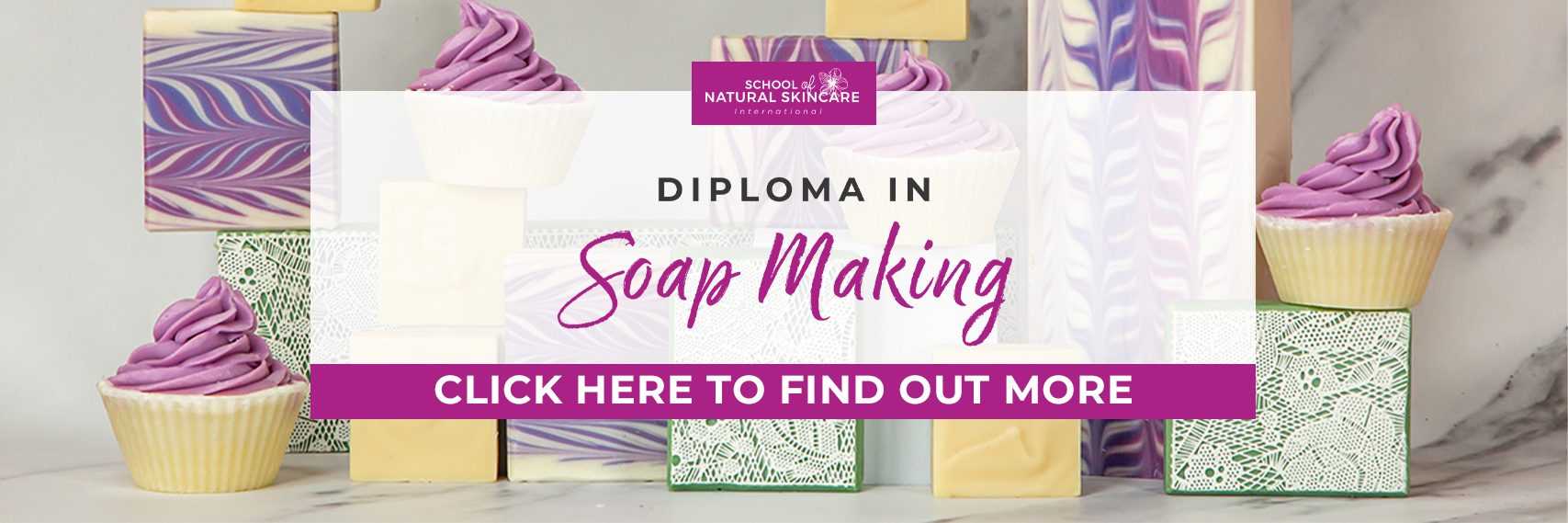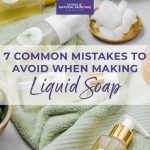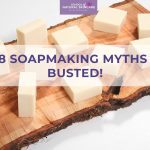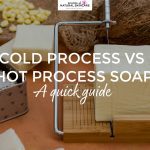For soap making enthusiasts who enjoy making bar soap, liquid soap making is an exciting next step!
Liquid soap recipes can be really simple, in some cases using just three ingredients: olive oil, lye and purified water. Liquid soap is also really versatile; depending on the recipe used you can make liquid soap for the hands and body or even as a household cleaner for dishwashing!
In this guide to liquid soap making, we will cover:
- What is liquid soap?
- What are the benefits of making liquid soap?
- Is liquid soap different to surfactant-based body and hand washes?
- How do you make liquid soap?
- How to make foaming soap out of liquid soap.
- How to make liquid soap thicker.
- Can you make liquid soap from bar soap?
- How is liquid soap different from soap bars?
What is liquid soap?
Just like when making soap bars, liquid soap is created through a saponification reaction between oils and lye.
The key difference between making bar soap and making liquid soap is the lye used in the reaction. Solid soap bars are made using sodium hydroxide (NaOH). Liquid soap is made using potassium hydroxide (KOH).
The best-known example of liquid soap is castile soap made with 100% olive oil, and one well-known brand of castile soap is Dr Bronner’s.
What are the benefits of making liquid soap?
- Liquid soap can be made with just a few ingredients, all of which are inexpensive, making liquid soap very cost effective.
- It can be a great addition to your product range (if you sell your products). While making bar soap is quite popular, fewer soap makers also make liquid soap, giving you an opportunity to create something other brands are not.
- It is easier to store during use. Liquid soap is packaged in a bottle so unlike bar soap you don’t need to worry about it draining between uses and there is no chance of it turning soft or mushy.
- The process is fast. Because liquid soap is made with a hot process, the entire soap making process is fast and can be done in an hour from start to finish.
- Liquid soap can be used for multiple purposes. Depending on the recipe, liquid soap can function as a super mild facial cleanser, or a strong and effective laundry detergent.
- You have control over the strength (cleansing capability) of the soap. Because the soap is diluted, this gives you total control over the finished product strength.
- Liquid soap can be customized with several different ingredients. Adding humectants will make it more hydrating, for example.
Is liquid soap different to surfactant-based body and hand washes?
Sometimes it’s difficult to differentiate between a liquid soap made with saponification and a liquid soap or body wash based on ‘syndets’ (synthetic detergents, often referred to as surfactants).
Both products look very similar – they are usually transparent, slightly viscous liquids. Both products create foam and have cleansing capabilities.
However, their molecular structures are different. Soap molecules (in a natural liquid soap) are very distinctive, comprising a long chain of fatty acids with negatively charged potassium on one side. Sydents, or surfactants, can have various different molecular structures and properties.
Some examples of naturally derived syndets that are not soap (chemically speaking) include sodium lauryl sulfoacetate, coco glucoside and decyl glucoside.
How do you make liquid soap?
Liquid soap making involves several steps:
- The oils and lye solution are combined in a slow cooker and mixed with an immersion (stick) blender.
- The mixture is left to ‘cook’ (saponify) in the slow cooker; the length of time will depend on the temperature at which you are making the soap. The result of cooking the soap is ‘soap paste’.
- The soap paste is diluted in purified water to make liquid soap.
- Diluted soap can be left unthickened or it can be thickened. If the diluted soap is left unthickened, it will have a viscosity similar to water and it can be packaged into a foamer bottle. When the liquid soap is dispensed through the foamer bottle, it turns into foam.
- Diluted soap can be thickened so that it can be packaged into a common pump bottle.
How to make foaming soap out of liquid soap
If you’d like to make foaming soap dilute your soap paste into liquid soap and leave it unthickened. This means it will have a low, water-thin viscosity and can be packaged into a foamer bottle. When the liquid soap is dispensed through the foamer bottle, it turns into foam.
How to make liquid soap thicker
If you want to package your liquid soap into a regular pump bottle you will need to thicken the liquid soap so it has more of a gel-like consistency.
Soaps with high amounts of oleic acid (for example, olive oil or sweet almond oil) can be thickened with a salt solution. Make a 20% solution of NaCl (table salt) and add it to the diluted soap, drop by drop, while stirring. Adding too much salt will cause the increased viscosity to drop, and eventually, the soap to separate. For this reason it is advisable to test the maximum viscosity that can be achieved for certain soap using a small amount of it.
If the soap cannot be thickened with salt, external thickeners, such as konjac gum, hydroxyethyl cellulose or guar gum need to be used. Depending on the thickener used, the soap recipe and desired viscosity, 0.2-2% of thickener is usually needed.
Can you make liquid soap from bar soap?
There are a lot of soap making myths and unreliable information on the internet, including that liquid soap is simply made by grating soap bars and melting this grated soap in water.
While this technically can be done, it doesn’t make a pleasant liquid soap. Due to the low water solubility of sodium soap (which is a name for soap made with NaOH as the lye), melting grated soaps in water will result in a creamy looking, thick, and not smooth mixture. Nothing like a true liquid soap, which is clear, thin, transparent and smooth.
So, while solid soap bars can be mixed with water, they don’t form a true liquid soap. In order to make safe, effective and easy-to-use liquid soap, you will need to use KOH as your lye and follow a different method.
How is liquid soap different from soap bars?
Both liquid soap and soap bars are made through the process of saponification. The ingredients are the same (oil and lye) but the lye used is different. Solid soap bars are made using sodium hydroxide (NaOH). Liquid soap is made using potassium hydroxide (KOH).
It is not possible to take a recipe for a soap bar and use KOH instead of NaOH at the same amount, to make liquid soap. It is important to calculate the amount of lye needed according to the lye you are using.
When using KOH the saponification reaction is slightly slower than when using NaOH. For this reason, liquid soap is usually made at high temperatures (60-100°C), to speed up the process.
Liquid soap also requires dilution before it can be used. The result of saponification is soap paste, which needs to be diluted with water to form the liquid soap we all know.
Liquid soap does not need curing, it is ready to use as soon as it has been diluted.
Learn liquid soap making with our online class!
Making liquid soap is very different to making bar soap and there are lots of myths about how it’s made (no it’s not made by grating bar soap and mixing it with water!).
That’s why in our online soap making class Advanced Soap Making: Liquid Soap, we cover everything you need to know to make liquid soap safely and successfully. Containing two detailed step-by-step videos showing you exactly how to make liquid soap and how to thicken it, and also how to test the purity of your potassium hydroxide (KOH), a beautiful and detailed class textbook to download, tried-and-tested recipes to follow and tutor support from a master soapmaker, you’ll have everything you to need to create exceptional liquid soap.
Advanced Soap Making: Liquid Soap is the fourth part of our Diploma in Soap Making. This four-part course is the the most comprehensive online soap making Diploma course available covering four areas of soap making:
Part 1: Cold Process Soap Making
Part 2: Advanced Soap Making: Soap Swirling Techniques
Part 3: Advanced Soap Making: Hot Process Soap
Part 4: Advanced Soap Making: Liquid Soap
Join the Diploma in Soap Making and get started immediately!
Alternatively, if you are already experienced at making hot process soap and would like to learn liquid soap making, then become a member of our Natural Cosmetic Formulation Club to join our Advanced Soap Making: Liquid Soap class. Check out the Club to find out how to join, get access to Advanced Soap Making: Liquid Soap and discover more exciting classes.
Liquid soap making curriculum
Here’s a sneak peek of the curriculum for our Advanced Soap Making: Liquid Soap class. The class includes six in-depth lessons:
- INTRODUCTION TO LIQUID SOAP MAKING
We’ll begin by looking at the differences between liquid soap and surfactant-based ‘soap’ and also the differences between making soap bars and liquid soap. This is essential to understand before proceeding with liquid soap making.
- WORKING WITH POTASSIUM HYDROXIDE (KOH)
Liquid soap is made with a different lye than bar soap. Bar soap is made with sodium hydroxide (NaOH), now it is time to learn how to work with potassium hydroxide (KOH).
It’s important to know the purity of your KOH to create a clear (rather than cloudy) soap. Follow our video tutorial to learn how to test the purity of your KOH.
We’ll cover:
- Introduction to working with potassium hydroxide (KOH).
- KOH purity setting in soap calculators.
- Testing the purity of KOH.
- KOH concentration in lye solution.
- Combining KOH and NaOH.
- PROPERTIES AND CHARACTERISTICS OF LIQUID SOAP
Liquid soap is very different to bar soap and in this lesson you’ll learn about the important properties and characteristics of liquid soap, plus some of the key steps involved in making liquid soap.
We’ll cover:
- pH.
- Neutralization.
- Transparency.
- Superfat.
- Viscosity.
- Concentration and dilution.
- Preservation.
- Thickening the soap.
- MAKING LIQUID SOAP
The first part of liquid soap making is similar to hot process soap making, as both are done using a slow cooker. There are then some steps unique to liquid soap making, such as diluting the soap paste to make liquid soap and then thickening the liquid soap into a gel (if desired). We’ll share:
- Liquid soap making overview.
- Hot process low temperature liquid soap.
- Hot process high temperature liquid soap.
- Cold process liquid soap.
- LIQUID SOAP RECIPES
We share four tried-and-tested liquid soap recipes for you to practice with:
- Classic Castile Soap.
- Duel-lye Castile Soap.
- Universal Soap.
- Household Cleaning Soap.
- ADDITIONAL SOAP INGREDIENTS
Additional ingredients can be used to add fragrance and color, or to improve the gentle and nourishing properties of the soap, increase the lather or create a more hydrating soap.
In this lesson you will learn about:
- Essential oils/fragrance oils.
- Glycerin.
- Aloe vera.
- Sugar.
- Panthenol.
If you have any questions about this article or learning to make soap and enrolling on our Diploma in Soap Making or joining the Natural Cosmetic Formulation Club, please email our customer service team on hello@schoolofnaturalskincare.com

